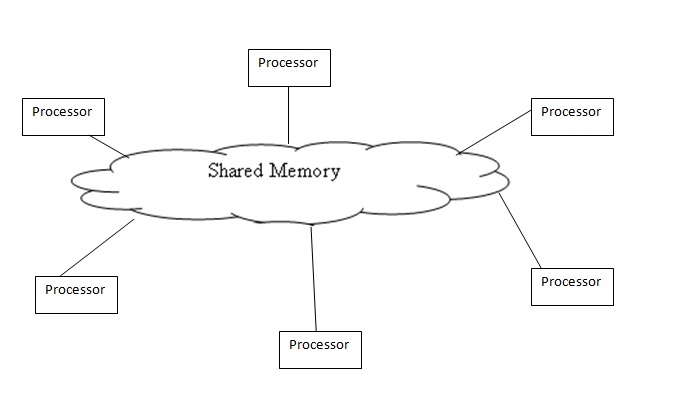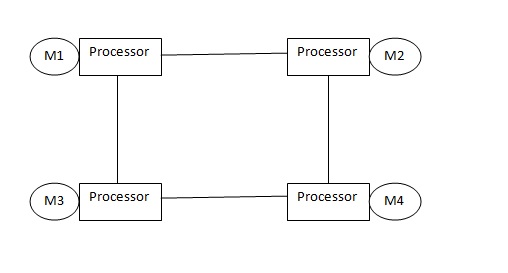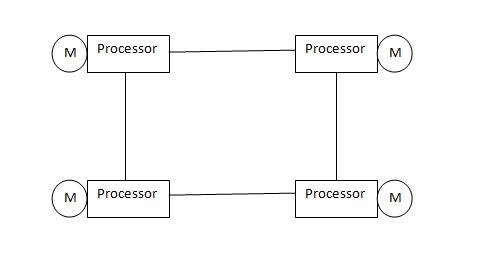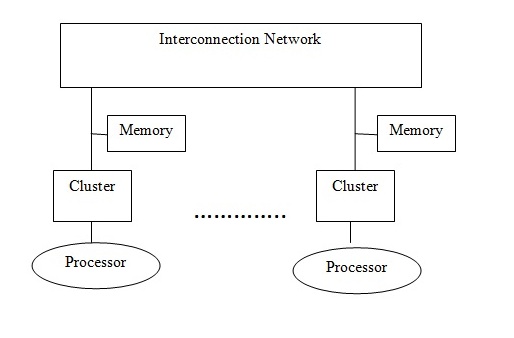CSC/ECE 506 Spring 2012/11a hn: Difference between revisions
| Line 22: | Line 22: | ||
<b>CC-NUMA</b> | <b>CC-NUMA</b> | ||
A CC-NUMA architecture has | |||
[[image:Cc-numa.jpg|thumb|center|400px|alt=CC-NUMA.|Cache Coherent Non Uniform Memory Architecture [[#References|<sup>[5]</sup>]].]] | [[image:Cc-numa.jpg|thumb|center|400px|alt=CC-NUMA.|Cache Coherent Non Uniform Memory Architecture [[#References|<sup>[5]</sup>]].]] | ||
===Software DSM=== | ===Software DSM=== | ||
Revision as of 23:48, 13 April 2012
The Distributed Shared Memory (DSM) system is a combination of a Shared Memory system and a Distributed Memory systems. The Shared Memory system has a group of processors sharing global memory which allows any processor to access the memory location[1]. The Distributed memory systems have a cluster each (i.e each processor has its own memory location ) and use message passing to communicate between the clusters[2] The DSM on the other hand has several processors sharing the same address space i.e a location in memory will be the same physical address for all processors. Unlike the Shared Memory System they do not actually use a global memory which is accessible by all processors, instead it is a logical abstraction of a single address space for different memory locations which can be accessed by all processors.



From the above pictures it can be noticed that in Distributed Systems each processor as its own memory,but in case of Distributed Shared memory though each processor has its own memory the memory is the same i.e The main memory of a cluster of processors is made to look like a single memory with a single address space. The Distributed systems are scalable for a large number of processors but is difficult to program because of message passing. The Shared Memory on the other hand is less scalable but is easy to program as all the processors can access each others data and makes parallel programming easier. Therefore DSM uses a more scalable and less expensive model by supporting the abstraction of shared memory by using message passing. The DSM allows the programmer to share and use variables without having to worry about their management. Hence a processor can access a address space held by other processors main memory. It allows end-users to use the shared memory without knowing the message passing,the idea is to allow inter processor communication which is invisible to the user.
A DSM system in general has clusters connected to a interconnection network. A cluster can have a uni-processor or multi-processor system with local memory and cache to remove memory latency. The local memory of a cluster is entirely or partially mapped to the DSM global memory system. A directory is maintained which has information of location of each data block and the state of the block. Directory organization can be that of a linked list,double linked list or a full map storage,the organization of directory will affect the system scalabilty[5].
A DSM system provides the shared memory abstraction by creating a software which would be cost efficient as it would not change anything in the cluster. Some systems provide the abstraction in hardware which could cost extra but the performance of hardware based DSM is better than software based [4].
Hardware DSM
To achieve the hardware DSM we need special kind of network interfaces and cache coherence circuits. There are 3 prominent groups of hardware which are interesting
- Cache Coherent Non Uniform Memory Architecture (CC-NUMA)
- Cache only Memory Architecture(COMA)
- Reflective Memory systems
CC-NUMA A CC-NUMA architecture has
